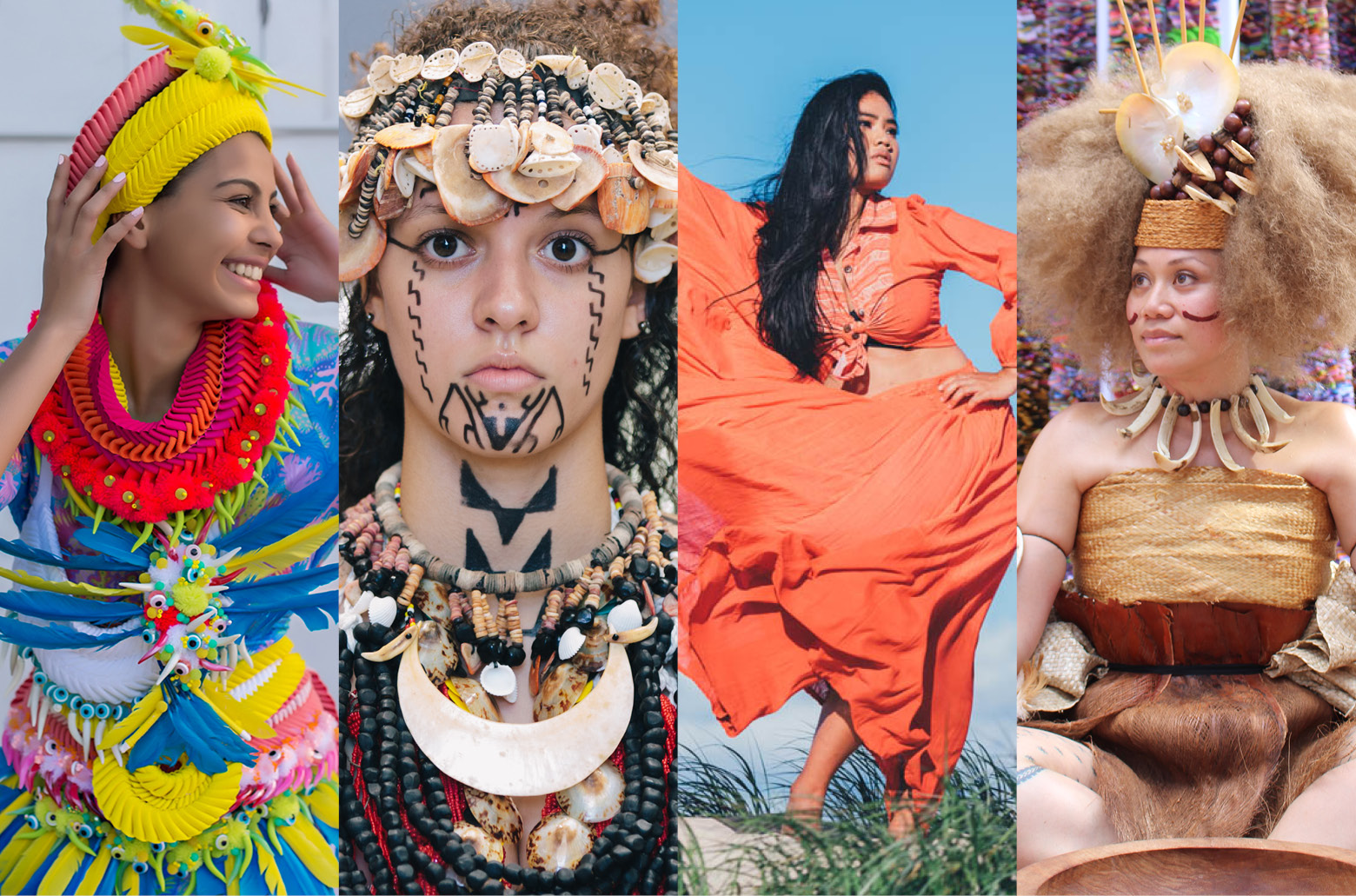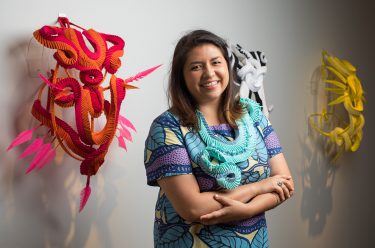As a descendant of the Meriam Mer people of the eastern islands of the Torres Strait, artist Grace Lillian Lee applies and adapts traditional craft techniques in her contemporary fashion design using pre-dyed cotton webbing in a multitude of colours. Lee’s woven necklaces and body sculptures are a modern interpretation of a technique she learnt from her mentor, renowned artist Ken Thaiday Sr from Erub (Darnley Island), who first taught her to weave with palm fronds — a technique affectionately referred to in the Torres Strait as ‘grasshopper weaving’, and one of the first to be taught to children. (The weave creates a grasshopper-shaped ornament that can be used either as decoration or as a child’s toy.)
Lee loves celebrating her lineage through fashion, which she says has been an incredible way to reconnect with her cultural roots and to ‘be proud of who I am and where I come from’. Her passion for fashion and design was inspired from an early age by her parents — her father is an artist and her mother is a hairdresser — and she is excited for children to have the opportunity to make their own wearable creations. ‘Fashion is a great way to connect and learn about different cultures and techniques’, she adds. ‘We all wear clothing: it’s a tangible item that can also share knowledge . . . create change, and be a voice of representation and discussion.’ Get Your Weave On is a simple paper-folding activity that Lee has developed for ‘Island Fashion’ to entice children to create colourful and wearable art.
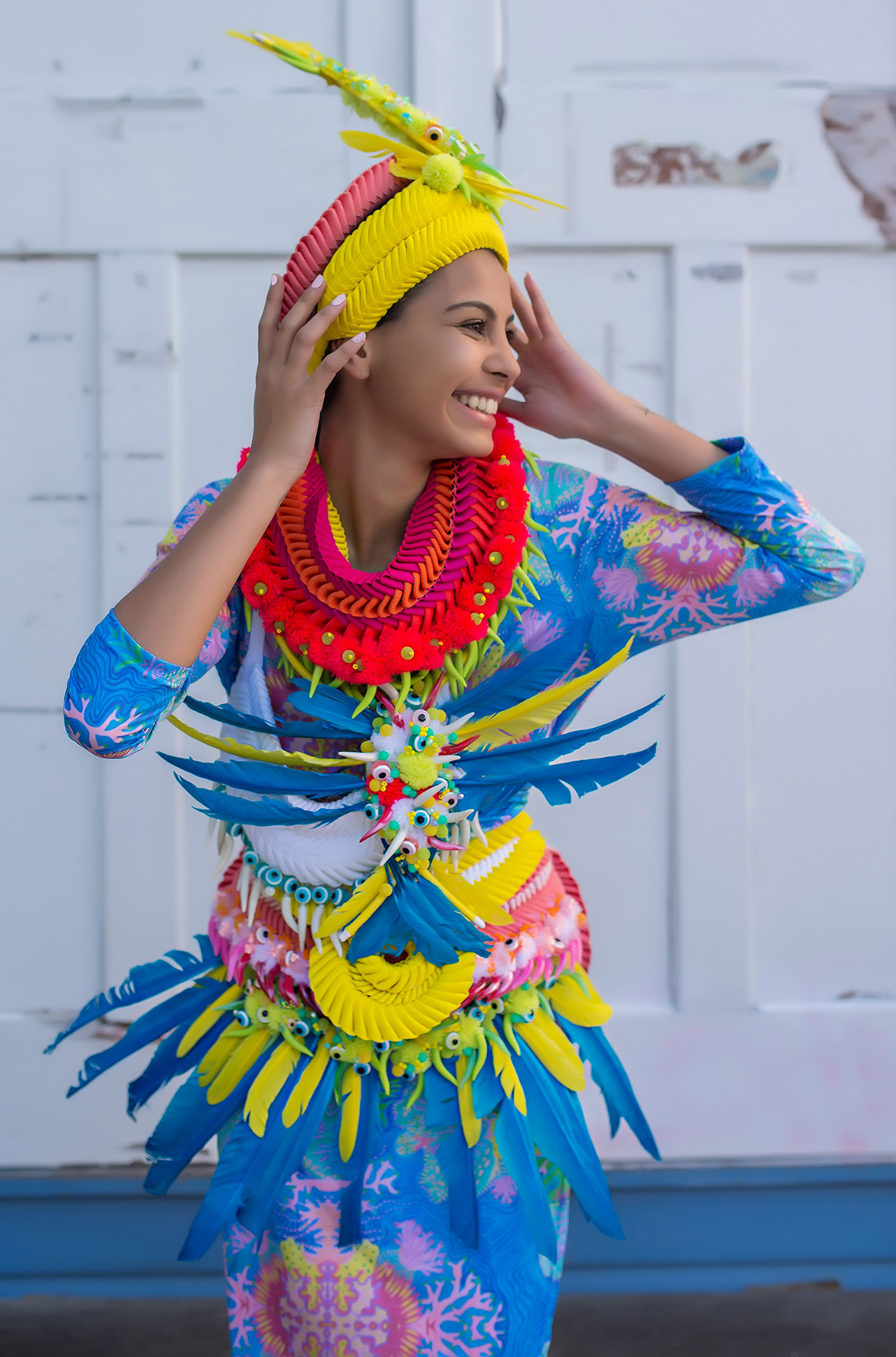
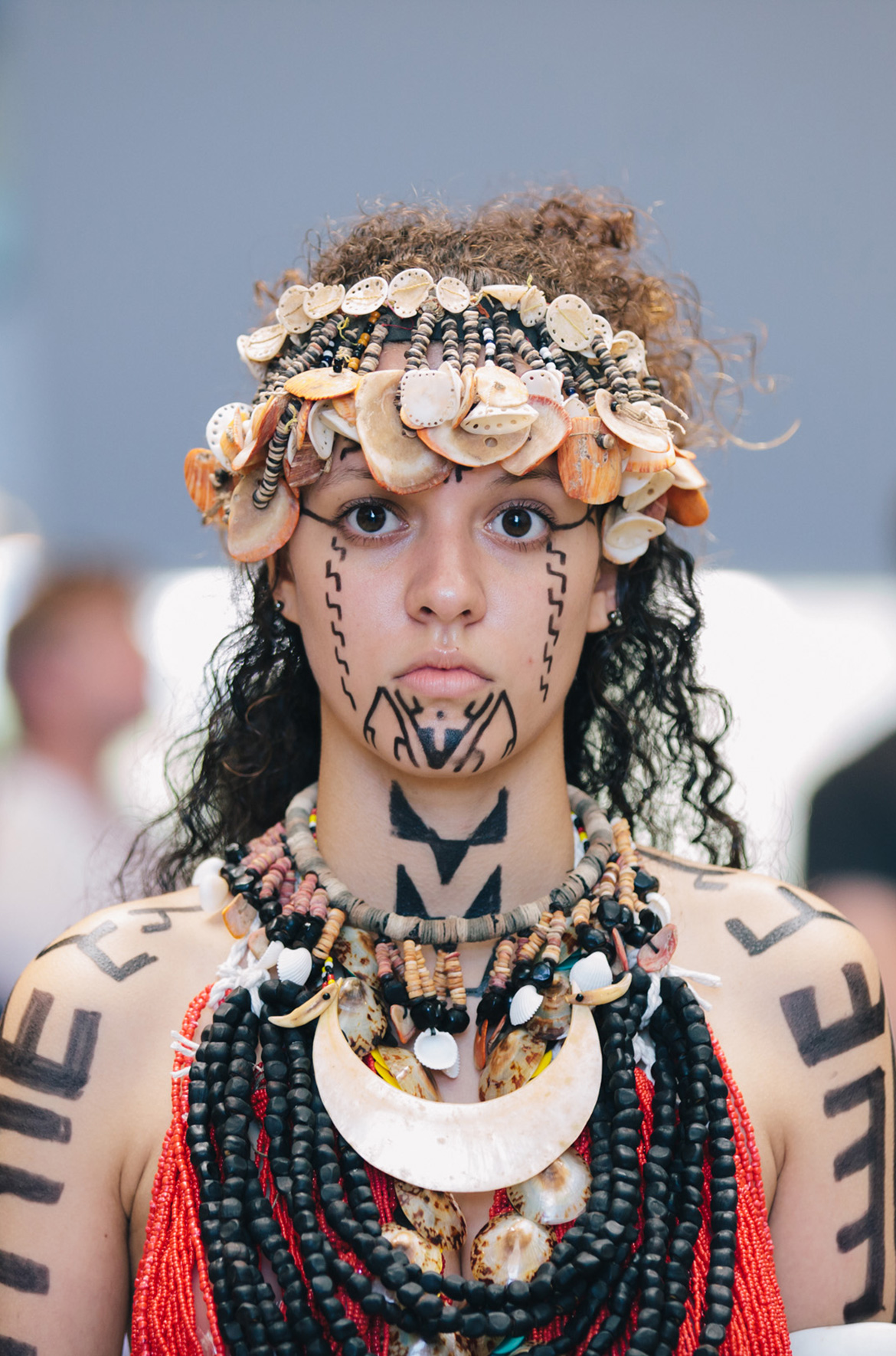

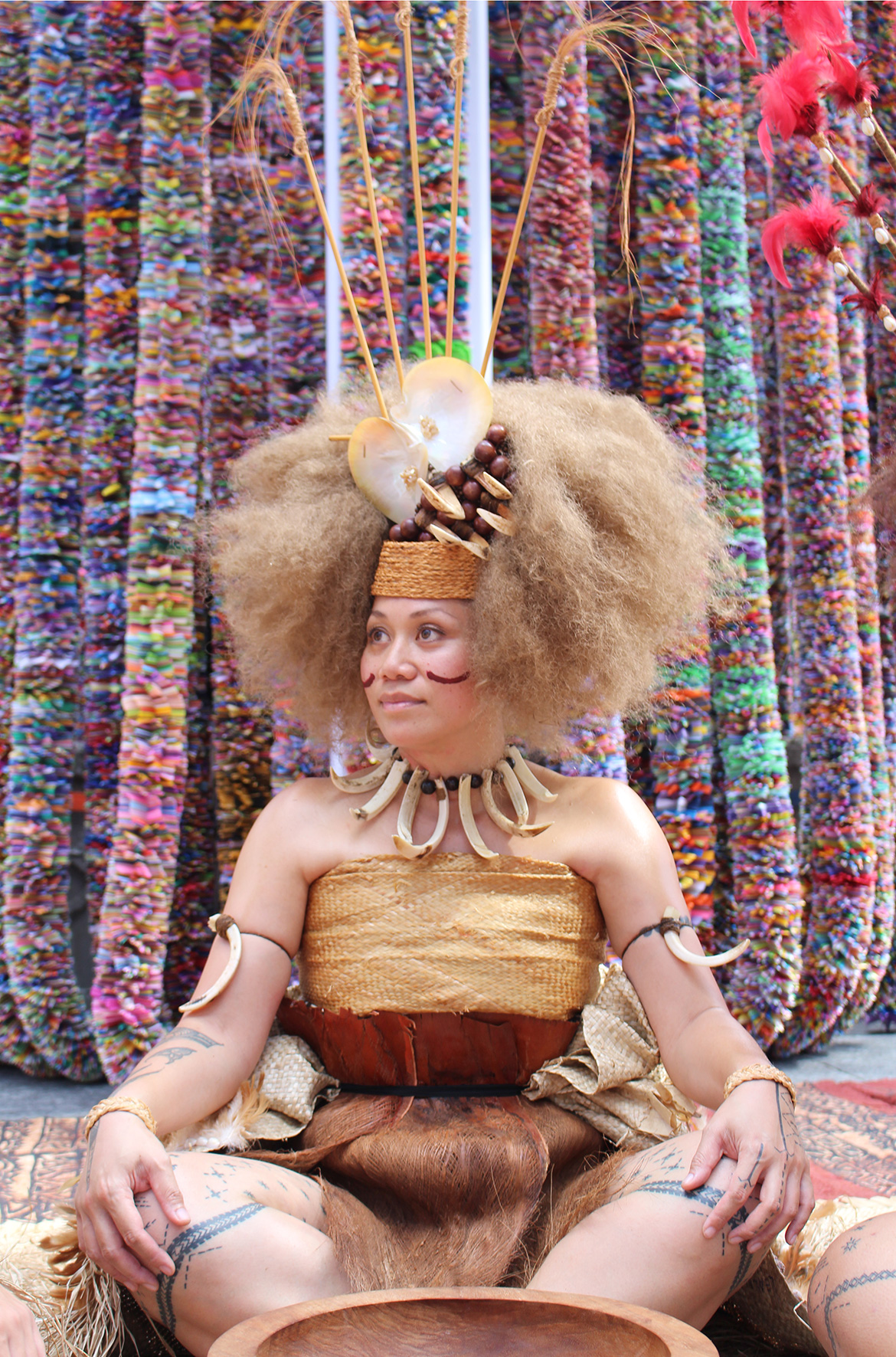
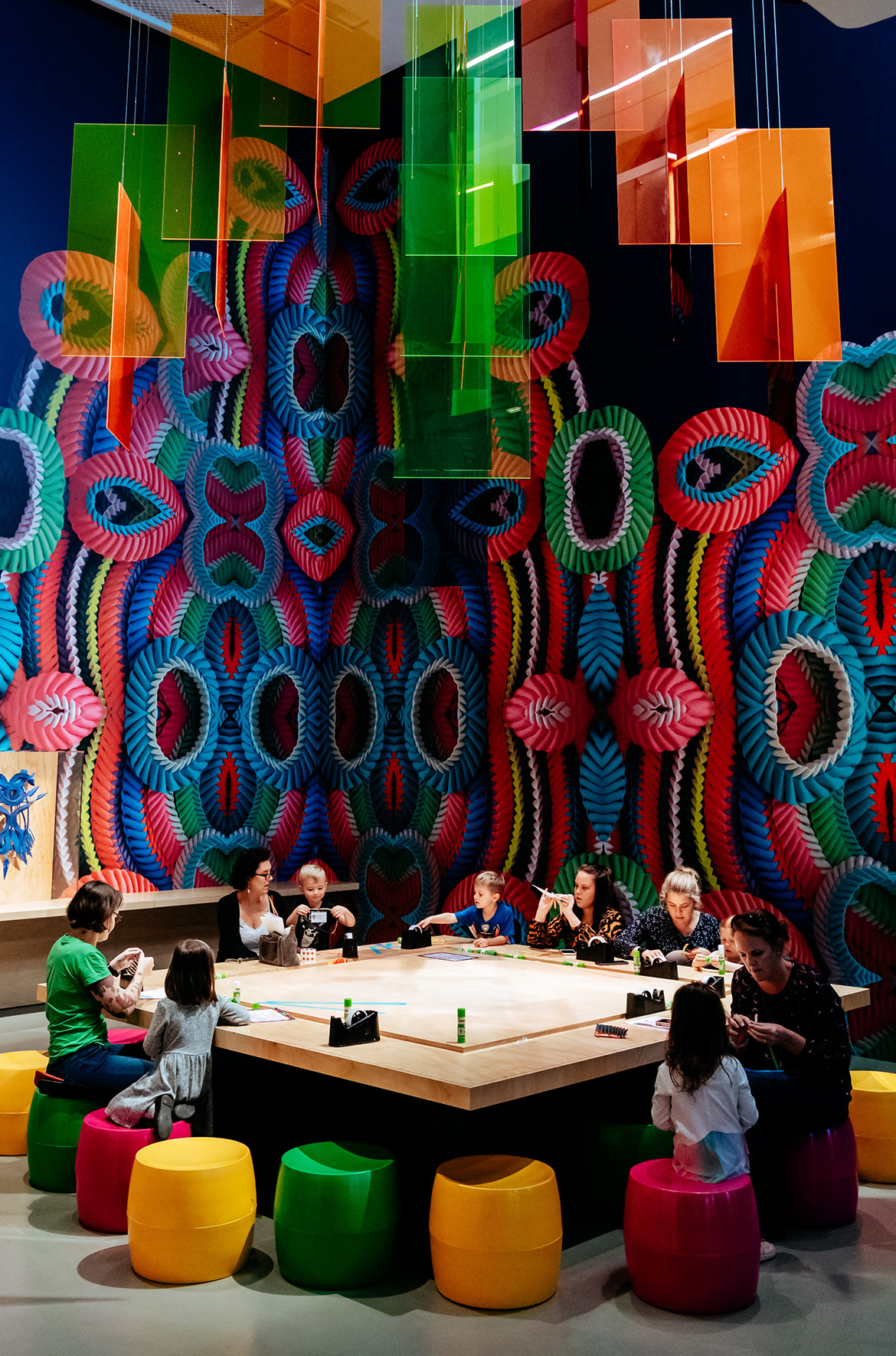

Like Lee, artists Maryann Talia Pau (of Samoan and Australian heritage) and Ranu James (from Papua New Guinea and Australia) both come from strong weaving backgrounds. While Pau is mostly self-taught as an artist, one of her first weaving experiences was in 2009 working with Aunty Roslyn from Arnhem Weavers in the small Northern Territory community of Mapuru. ‘She told me that I’m meant to weave’, Pau says. ‘That meant so much to me. My hands and spirit woke up [and] I’ve been weaving ever since.’
Pau and James have collaborated on an activity for ‘Island Fashion’ titled Ula Taim, which gives children the opportunity to create a neckpiece, wristband or anklet that they can embellish with patterns and woven details. As a child, James watched her own mother create costumes and adornments for dance with the many Papuan and Pasifika Aunties she surrounded herself with in Australia. ‘They laughed, sang, ate, wove, sewed, beaded, printed, drew and knotted together’, she says.
I sat beside them and learnt from them. I’ve done this with my own children now . . . [they] sit in circle with strong Pasifika women, listening to our conversations, hearing our questions, watching us as we find new ways of connecting and establishing meaning as we . . . grow and develop our culture together.
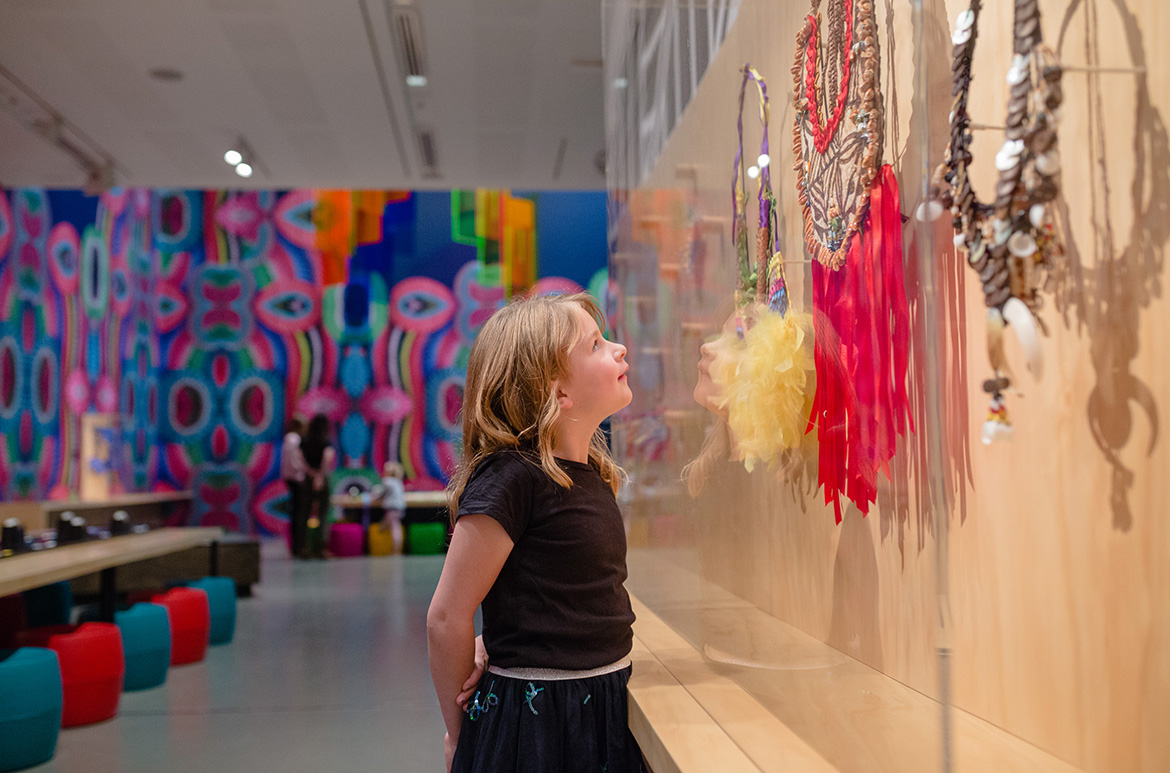
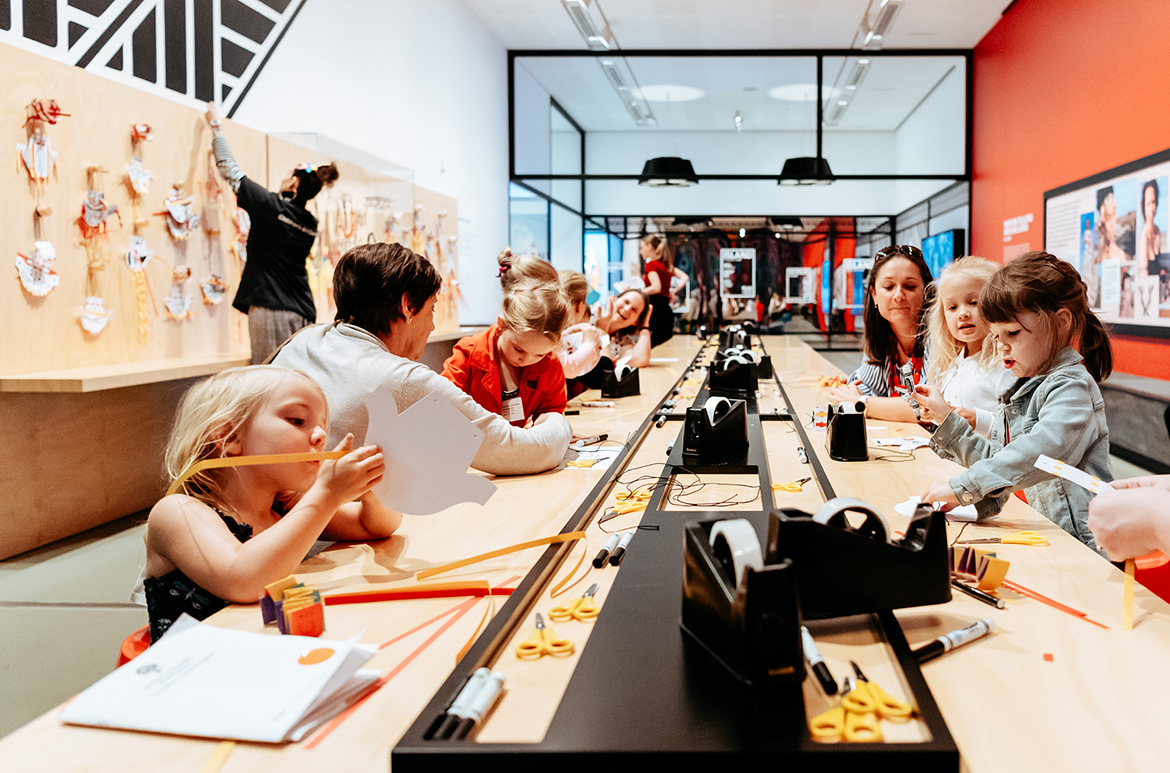
To inspire children to make their own wearable pieces, the artists have worked with the Gallery’s graphic designers to produce a large-scale mood board that features images of the artists’ work. Two colourful breastplates by Pau and three works by James (the headpiece Gema 2019 and neckpieces Ageva 2019 and Doah 2019) were also created especially for ‘Island Fashion’. Pau hopes that these accessories will convey
the special stories of families, people groups, values and ceremonies that we have in the Pacific. They are much more than beautiful necklaces and headpieces — they have generations of mana (power) and love in them, and we are proud to wear these pieces.
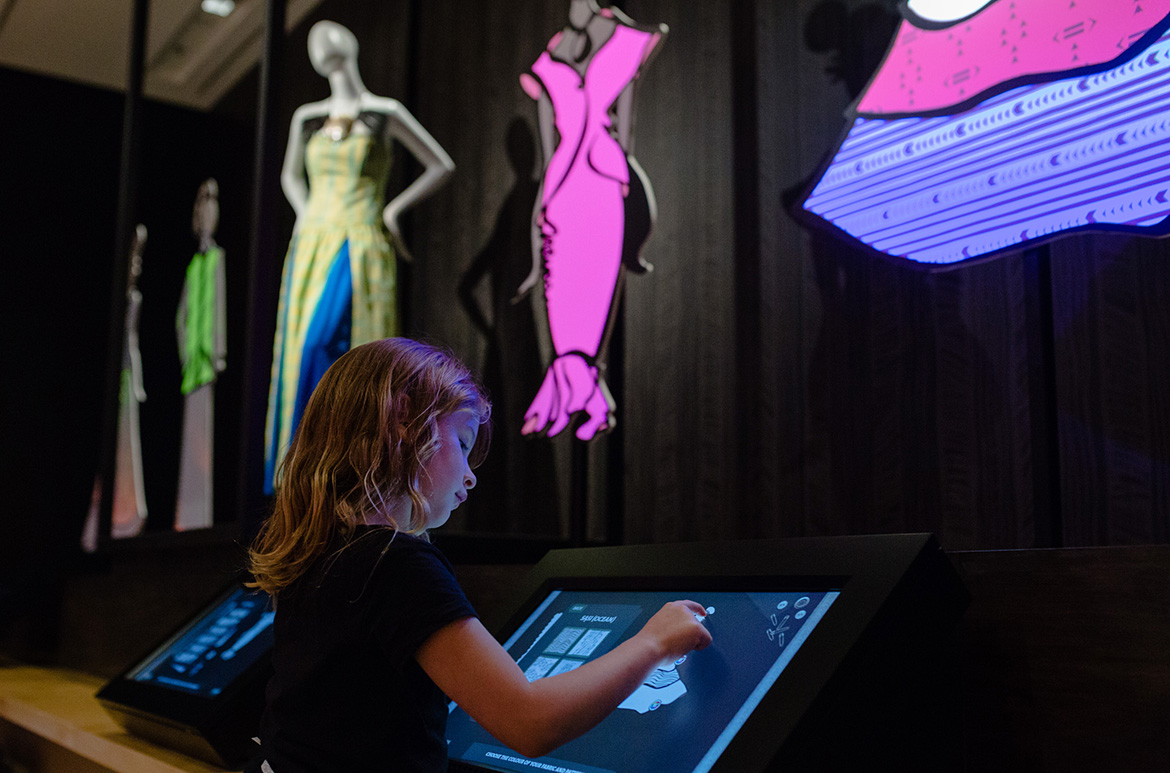

Pattern is hugely important to both Pau and James, whose works often incorporate traditional markings. Pattern is also at the heart of Letila Mitchell’s multimedia interactive Sasi, Pera, Lagi – Of the Ocean, Land and Sky. Mitchell is a Rotuman and Fijian woman and director of RakoDesigns, a fashion and design label based in Fiji that reflects the Rotuman, Fijian and Pacific heritage of its creators, while also encouraging innovation and creative freedom. The printed patterns on RakoDesigns garments are part of Rako’s work in the revitalisation of Rotuman symbology, and create an awareness in children of their ecology: using the environment to create patterns encourages children to go out and look for these patterns, which in turn creates and appreciation of the beauty of their surroundings. For this exhibition, the artist shares a selection of her patterns, which children can then use to create their own digital textile pattern. These can be projected onto a life-size cut-out of one of Mitchell’s sketched garment designs.
Together, these four artists have created a world of fashion and art for young visitors, with an emphasis on imagination and play. ‘Island Fashion’ also enables children to access and interact with diverse cultural groups, an aspect of the project that has been particularly important for each of the women involved. ‘Any opportunity to break down prejudice, stereotypes and to dispel fear of the “other” through the arts is important, inspirational work, and it’s something I love being a part of’, James says. She adds that participating in the project for the Children’s Art Centre is an opportunity for a conversation about diversity, and considers the project ‘really important for the multicultural society we live in. The arts provides a gentle entry point for these conversations to happen’.
Jacqueline Tunny is Program Officer, Children’s Art Centre, QAGOMA. She corresponded with each of the artists in June 2019.
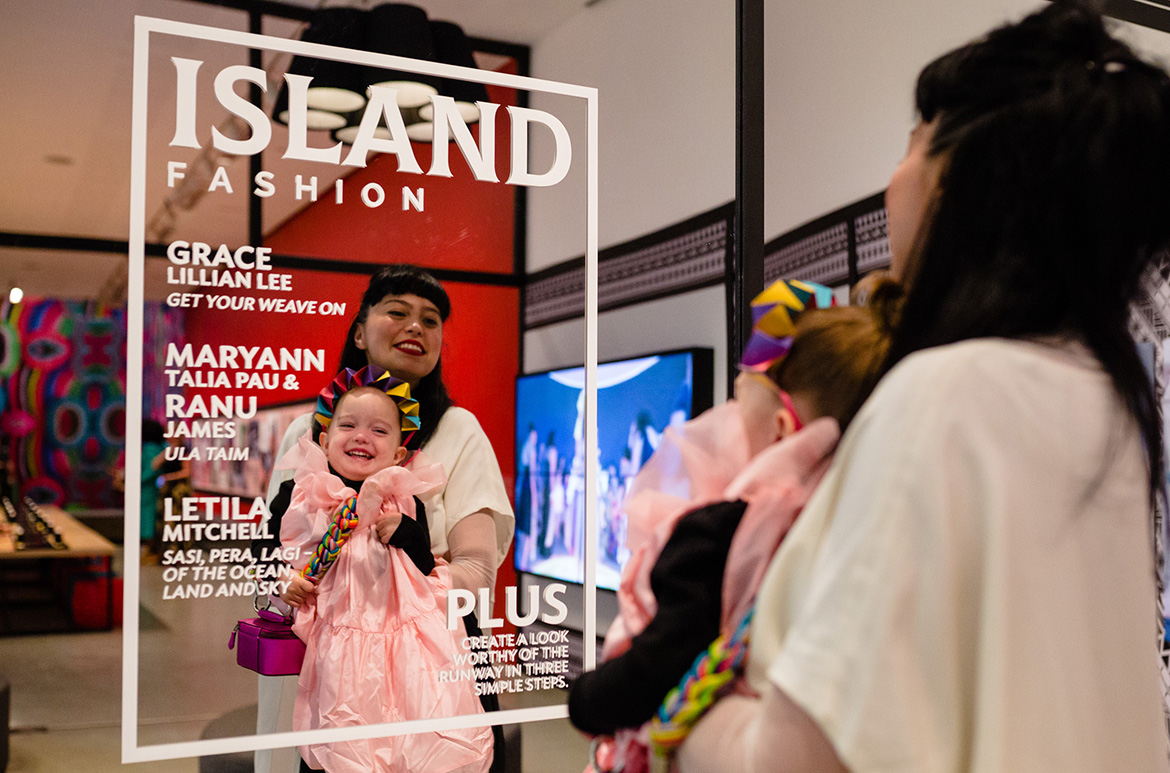
Read about Asia Pacific artists / Know Brisbane through the QAGOMA Collection / Delve into our Queensland Stories or Australian Art highlights / Subscribe to QAGOMA YouTube
‘Island Fashion’ was at the Gallery of Modern Art (GOMA) from 10 August 2019 to 15 March 2020.
Feature image details: Grace Lillian Lee / Moale James wearing a Gema headdress and Dog and Ageva necklaces / ‘Katalina’ from Letila Mitchell’s Hata Collection 2018 / Maryann Talia Pau
#QAGOMA
